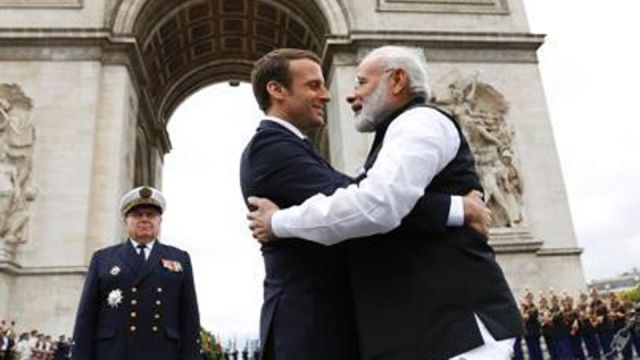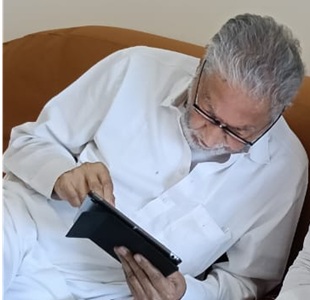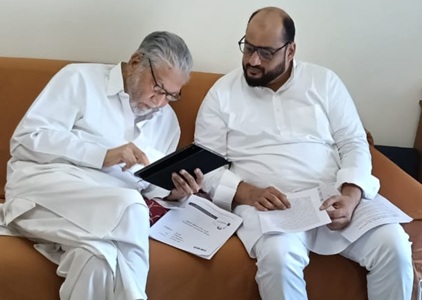
Prime Minister Narendra Modi with French President Emmanuel Macron at the Arc de Triomphe, Paris, June 3, 2017.
By Ranvir Nayar,
Over the last seven decades, Indias relationship with France has been steady and stable, but perhaps a bit stale and out of energy — just like a long-married couple.
The election of Narendra Modi in 2014 as the Indian Prime Minister and the advent of Emmanuel Macron as the French President last year and the rapid economic reforms in both nations seem to have put a new energy in this relationship.
The two men have quite a few similarities. Both were elected to lead their respective nations with a surprisingly large majorities, demolishing the opposition parties, both used digital communication and social media networks to win the elections and continue to use them religiously even afterwards. They are also both seemingly in a big rush and have initiated a slew of economic reforms, including controversial ones and have so far managed to carry the day.
Both the leaders have also made their place on the global diplomatic platform and have infused a new dynamism in the international relations of their respective nations.
Thus when Prime Minister Modi and President Macron meet on Saturday in New Delhi, for the second time in less than nine months, there is widespread expectation they will infuse a new dynamism and energy in Indo-French ties.
It is a relationship that is multi-faceted, definitely time-tested and stable but in some aspects has also become stale. Over the decades, international affairs and geostrategic issues have become the bedrock of this relationship.
The bilateral relationship has received a big boost in the recent past due to the French prowess in certain domains that have become critical for India’s development. For instance, in the Smart City programme of the Indian government, which envisages development of 100 such cities, France is one of the key partners for India and can share a lot of knowhow, technology and processes to help this initiative. Currently, France has adopted three cities in India under this initiative.
France can also be a key partner in modernising and upgrading the creaking railway infrastructure across the country, improve the signaling and communications network as well as improve safety practices and standards and also help in introducing semi-high speed and high-speed railways in the country. The French national railway company, SNCF, is already conducting a feasibility study to upgrade the Delhi-Chandigarh route to a semi high-speed one.
The two countries are also collaborating in the shipping industry with French ports, notably Marseille entering into a ‘sister port’ agreement with Mumbai. French companies are also present in the large road construction projects in India. In waste management and water supplies, French industry leaders such as Veolia and Suez have been bagging contracts with Indian municipalities for some years now.
The list is seemingly endless. In the area of high technology, such as smart cards and avionics, as well as biotechnology, artificial intelligence, augmented reality and machine learning also there is a lot of scope.
Despite the very long list of potential business collaboration between the two nations, this is by far the weakest link in Indo-French ties and has been the case for decades. The trade has remained stubbornly stuck around 9 billion euros for close to a decade. Indo-German trade, by contrast, is close to 25 billion euros and India-UK around 27 billion euros. In fact, even though France is the third largest European economy, it ranks ninth in the terms of EU member nations’ trade with India, behind much smaller nations such as the Netherlands, Italy and even Belgium.
The trade is inordinately dependent on the Indian government or companies placing large orders for high value items such as defence equipment or civil aircraft. In the absence of these large deals, trade suffers and remains stagnant.
Even though there are nearly 300 French companies in India, an overwhelming share are the largest, with small and medium enterprises — the backbone of the French economy — almost entirely absent from the scene. This is in sharp contrast with Germany, whose SMEs have been fairly aggressive in India and are present in various domains. The story of Indian SMEs in France is no different. Besides exporters, mainly of commodities, some engineering products and textiles, the number of Indian SMEs engaged with France can be counted on the fingertips.
It is not for lack of trying, though. The French and Indian governments have long been trying to get SMEs to start exploring market opportunities. Way back in 2006, the then economy minister of France and the current head of the International Monetary Fund, Christine Lagarde led over 500 French SMEs for a roadshow across various Indian cities. A number of other delegations of SMEs have been travelling to both the countries, but with very limited impact.
The biggest hurdle for the SMEs is that they lack market knowledge, adequate exposure and the financial muscle to explore new markets, especially ones reputed to be difficult — something shared by India and France. These factors make them highly risk averse.
To do some handholding and encourage French SMEs to start working with India, the Indian government has launched a concerted attempt — Access to India Initiative, which would identify relevant French SMEs, especially in manufacturing domain and assist them in all actions such as market research, creation of company, recruitment etc.
Such measures should encourage some French SMEs to take the plunge in India and if they succeed, it could lead others to follow.
A lot of expectations are riding on the Modi-Macron encounter and this visit has the potential to become the game changer in the bilateral relationship. However, overcoming the hurdles is far from easy and the two leaders would have to use all the tricks in their bags to make France and India natural business partners as well.
(Paris-based Ranvir S. Nayar is managing director of the Media India Group. He can be contacted at r.nayar@mediaindia.eu)
—IANS





0 Comments